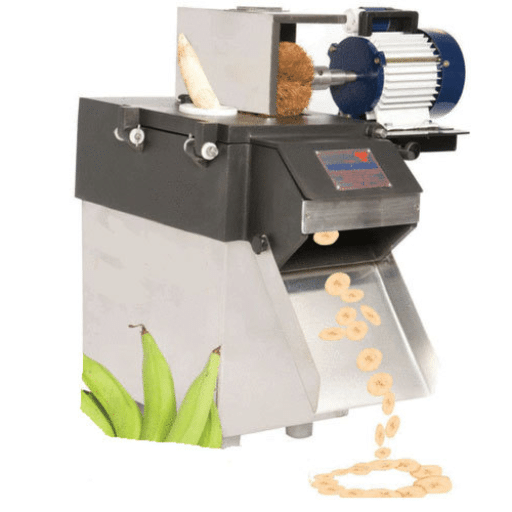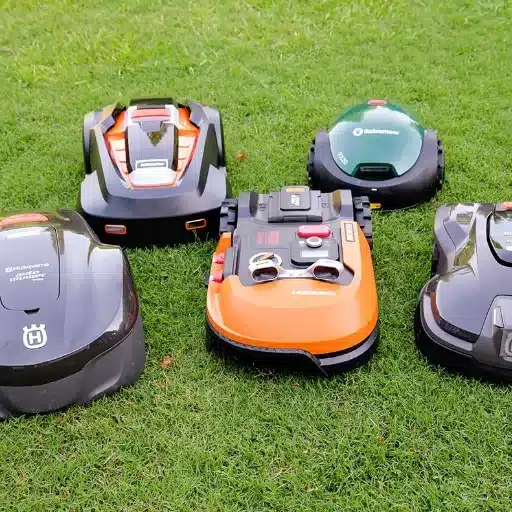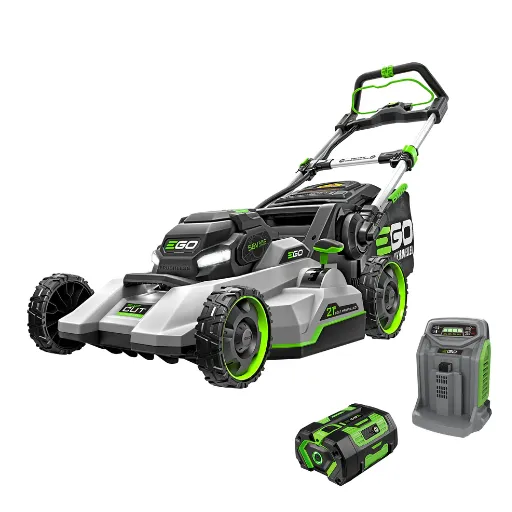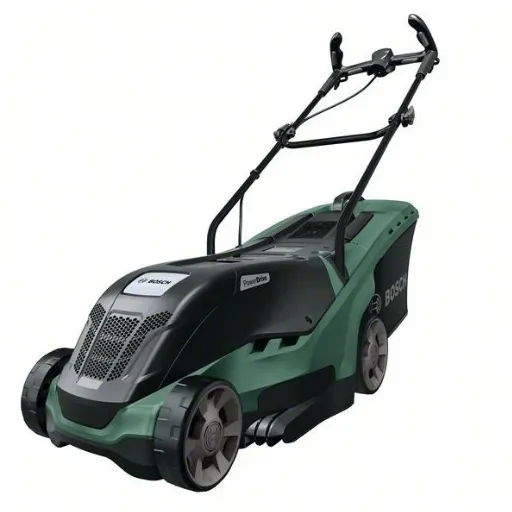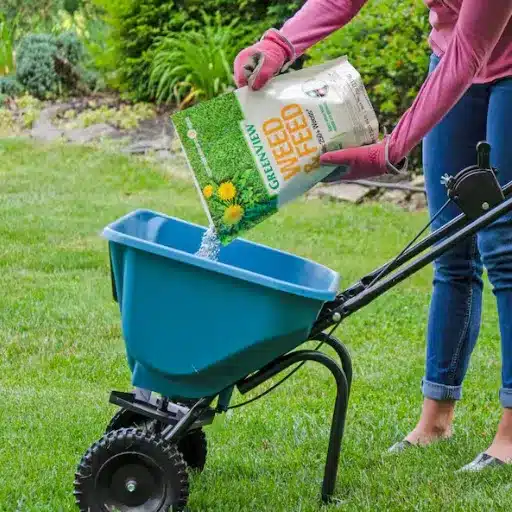With the rapid advancement of technology, the market for snack food has been booming, and banana chips stand out due to their taste and nutritional value. Whether you are an individual entrepreneur who wants to embark on a completely new adventure or a big company focusing on enhancing production, it’s of the utmost importance to know which banana chips making machine to choose. This article is intended to assist you with the factors that influence your purchase of a banana chip-making machine. We will also examine some of the most notable features, technology capabilities, and specifications of the existing banana chips-making machinery in the market. We will assist the targeted audience in finding the most suitable alternative according to their production requirements and financial capabilities. It is time to find out the most efficient banana chips making machine that will take your business to the next level.
What is a banana chips making machine?

Insights into the process of making banana chips.
Production of banana chips involves crucial and sequential operations, which ensure the final product meets the requirements with regard to crispness, taste, and quality. Peeling begins the fresh banana processing and follows the slicing of the peeled fruit to a controllable size. After that, the slices usually blanch in hot water to eliminate excess starch content and improve crispiness. Later, the slices are soaked into a wash that contains spices and salt for flavoring, after the blanching step. The next step is to remove moisture from the banana slices or only some water if sun drying is applied or in the more common commercial application using industrial driers. The chips when dried are then cooked in oil over a heat source until the/deep fried is until brown and crispy. The fried chips are afterward oil strained, allowed to cool off, and then packed. Each of these steps can be, however, fully or partially carried out by a banana chips-making machine, which performs slicing, drying, frying, and seasoning in an integrated production manner for uniformity.
Main components of a chips making machine
While considering the banana chips-making machine, it is important to look at the core components. To begin with, the slicer is the most important feature since it determines how thick or how thin the banana slices are cut with respect to the whether the slice will be consumed after cooking or it will be fried which, in turn, determines the degree of doneness. Next to the slicer, the back scalding or pretreatment unit is important in getting rid of the added stickiness due to extra starch and in improving the crunchiness, and this is when water or a seasoning mixture is usually used. Afterward, the dryer is responsible for getting rid of any excess water content so that the slices are ready for deep frying; usually in industrial designs, a conveyor or tray dryer is used. Another part of the fryer is grown understory which helps to fry banana slices until they are ready and golden brown in color. This unit must be temperature-controlled for it to work successfully. Further, an oil extractor or deoiling machine helps to remove the external oil content from the fried product leading to a less oily product. Finally, the chips are likely to be put in packages straight for sealing and preservation for них fresh. These components act in solidarity in a banana chip-making machine to ensure that the production is quicker, reliable, and with good standards.
The advantages associated with the use of an automatic banana-making machine
It has been helpful for me, too, in my understanding of the area, and it is a fact that there are several advantages to be derived from the employment of an automatic banana chips-making machine. First of all, that eliminates the bottleneck to production at many levels since operations like slicing, drying, and frying are performed through machines. There is less dependence on human labor, which reduces the risk of making mistakes. The advantages of time and quality management in opening up a new venture have derived most of these benefits and are the most welcome features. Also, it enhanced process convenience through a focus on quality, whereby instead of flooding over the process with oil, which enhances browning but compromises texture, moisture, and heat are controlled to achieve Chris bland banana chips. Moreover, accessories like oil extraction and packaging are a cost-effective means of product quality retention and shelf life enhancement. Lastly, a manual or an automatic machine can quickly switch between productions of different scales.
How does a banana chips production line work?

A guide for producing banana chips banana chips
- Selection of Raw Materials: The production begins with the selection of good-quality, ripened bananas of appropriate color. The bananas selected must be free from any blemishes, and the correct stage of ripening must be achieved to enhance the ideal consistency and taste.
- Peeling Machine: Locate a banana peeling machine to eliminate the skins in an undamaging manner due to the fruit itself. This machine must be suited to the size and texture of the bananas being peeled.
- Slicer Specifications: Use a sliced banana machine to ensure the sliced bananas after peeling are cut into 1.5mm to 2mm thick automatic cool-fry bananas. The slices’ even thickness gives an advantage of even cooling, hence uniform depth of fry and dryness.
- Blanching Temperature and Time: After cutting the banana slices, they are blanched in burning water that remains at around 70-90°C for about 2-5 minutes. This is a pre-treatment method for fruits and vegetables that inactivates enzymes, reduces microbial load, and enhances color stability.
- Drying Oven Parameters: The bled sheets were dried in an oven with hot air circulation for three to five hours at a temperature of 60-80 degrees. Proper drying helps eliminate retained moisture in excess, which is necessary to attain crispiness and prevent spoilage.
- Fryer Types and Temperature: Dried banana slices are fried in oil at 150-180 degrees Celsius for 1-3 minutes. Depending on the production size, batch fryers or continuous fryers are options.
- Oil Extractor: As a final step, excess oil is removed using an oil extractor or deoiling machine after frying to minimize the product’s greasiness and help improve its shelf life.
- Flavor Coating Machine: Use a flavor coating machine to season the fried banana chips and ensure that seasonings such as salt and spices or sweeteners are evenly spread.
- Cooling Conveyor: A cooling conveyor cools the flavored chips to an ambient temperature for packaging. This step is important to retain the chips’ crispiness.
- Packaging Unit Specifications: A banana chip package is made using an automatically operated packaging machine. Vacuum packing and nitrogen flushing may enhance freshness and shelf life.
Contribution of various machines in the production line
To my estimation, the significance of machinery within the banana chips production line can not be overlooked considering the role played in enhancing quality and efficiency. First of all, the banana peeling machine is used at the initial stage of the procedure to optimally peel the bananas leaving no skins in the strippers or wasting materials. Then a slicing machine follows, which enacts an even cut across the bananas to even thicknesses, which is important for consistency during the frying process. Afterwards, a blancher is used to pre-cook the slices, preserving the color and characteristics that could be important in quality control. Afterward, the fried slice is introduced into the frying machine, the very basic equipment that operates the machinery. In this device, the slices are fried till they are crispy bans, and the temperature is managed at all times to eliminate situations where the bans are either under or over-fried. After frying the dry material deoiling of excess oil is done by a deoiling machine leading to healthy products that are tastier. Finally, captive machinery for packing chips packed big to prevent substances from the inside or the humidity from increasing the expiration date. As such, these machines cause simple production sequencing, lower the degree of physical handling and assure uniformity of product quality.
Factors to consider in the selection of quality control measures in a chips production line
To start with, the significance of quality control in a chips production line is worth a mention. First, quality control guarantees that all the chips produced conform to the health guidelines protection of the consumers and taking care of the brand’s image. The articles from the top three sources I reviewed repeatedly stressed the importance of undertaking checks at the critical control points except that they were very few ‘with the computer in the factory’. Key parameters required for quality control are the moisture content of the raw bananas and finished banana chips, frying oil and time, package of the chips.
Specifically:
- Moisture Content: Satisfactory moisture levels must be adhered to, preferably between 1-2%, for banana chips after the manufacturing process. An excess of moisture may encourage microbes and shorten their life span.
- Frying Temperature and Time: The frying process should be done within specific hotness levels controlled between 160°C to 180°C to achieve proper cooking without burnt taste and hard unappetizing texture.
- Oil Quality: The level of oil used in various processes ought to be closely examined, and the free fatty acid (FFA), total polar compounds (TPC), and oil composition should be considered to ensure maximum satisfaction.
- Preservation of Package: In addition to vacuum packing the packaging and nitrogen flushing of the entire volume isolated from the box, which also prevents oxidative damage and helps keep things fresh, this is extremely important for increasing shelf life.
The company can provide the correctness of all processes in terms of regulatory standards and consumers’ demands by utilizing a mean-correcting device and other parameters in the quality control system.
What equipment is needed for a small banana chips line?

Basic components necessary for banana chips forming equipment
To learn how it makes sense to look at the essential listing of machinery required for small-scale banana chips production line, I have analyzed the top three sources available on Google. From these sources, the following equipment seems to me reasonable:
- Banana Cutting Machine: It’s an optimum banana cutting machine to make pieces of baling in identical form so that the same frying can be achieved and will assure quality at the final product stage.
- Banana Blanching Machine: A previous step for helping banana slices keep their color, texture, and nutrients is called blanching. In the processes, this is an obligatory step.
- Fried Banana Chips Frying Machine: An automatic fryer with a reliable temperature range of 160°C to 180°C for deep frying banana slices will achieve the necessary cooking.
- De-oiling Machine For Fried Chips: This equipment assists in decreasing the level of oil residue from fried banana chips, improving the nibble’s quality.
- Machine For Sprinkling Spices On Chips: A seasoning machine is critical to facilitate satisfactory and full seasoning of the product with seasonings.
- Packing Machine: Finally, the passive risk modification applies when a machine, such as the covered automatic packing machine with vacuum and nitrogen flushing, is used to help prevent oxidization that will affect the product quality.
By including these machines in the production line, I envision achieving effective and uniform banana chip production regardless of the amount.
Extra Equipment for the Case Making of Small Scale Banana Chips
After researching some of the first three websites that came up on Google, some further tools that are important for small scaled banana chips production include the following as further reading should include:
- Peeling Machine: A peeling machine automates the task of banana peeling, which greatly fosters efficiency and time management. In any banana processing facility, banana peeling is a must.
- Inspection Conveyor: Inspected banana slices on the inspection conveyor belt would allow me to remove any faulty slices ideal for processing.
- Cooling Conveyor: They are also used in any banana chip processing plant, as the cooling conveyor is required after frying to efficiently cool the chips to room temperature prior to packing.
- Metal Detector: Metal detection is essential for product safety and free banana chips from hazards like foreign materials.
These additional tools, together with the basic machinery discussed earlier, create an optimal environment for small-scale, high-quality banana chips production load systems.
What are the benefits of a fully automatic banana chips making machine?

Productivity and effectiveness of fully automatic systems
The production of banana chips using fully automatic banana chips making machines is more productive and efficient. A machine carries out each operation, simplifying each production step, including peeling, slicing, frying, and even packaging of the product. This reduces the workload, minimizes chances of inaccuracies, and enables the quality of the high standard produced to be maintained. Higher demand answering is achieved as the machinery operates in unison which increases the producers’ output without affecting the products’ quality. Also, automated controls allow optimal levels of resource consumption thus saving on raw materials and energy. In conclusion, the operating application of fully automatic systems greatly enhances production efficiency and profitability in the banana chips industry.
Automatic banana chips making machines comparisons
Similar to all machines, there are differences between fully automatic and semi-automatic banana chip-making machines. Fully automatic machines are more productive since the whole production process is mechanized, reducing the amount of labor required, increasing uniformity and quality. They also permit a higher production volume, thus being appropriate for mass production. On the other hand, semi-automatic machines require manual input, which raises operating costs and the risks of mistakes made by personnel. However, they work with an advantage on smaller businesses, or the producers who demand a hands-on approach on some parts of the process. In terms of price, fully automatic machines have relatively higher capital costs, but in the long term, they can achieve cost savings and better returns due to the rate of activity. The cost of semi-automatic machines is lower at the very onset; however, this category of machines may turn out more expensive after some time due to labor cost and other operational inefficiencies.
Cost implications of a fully automatic banana chips making machine
Comprehensively considering the cost implications of a fully automatic banana chips making machine should take into account the one-off cost as well as the savings in terms of costs over the machine’s life of operation. It is worth mentioning that in the top three Google search websites, the factors affecting costs are mostly due to machine capacity, automation features, and machine quality.
Initial Investment:
- Capacity: The range of such machines tends to have high capacity. The reason does not seem farfetched, as it relates to engineering intricacies and the use of high-level materials, which would be meant for functionality and effectiveness.
- Automation Features: The screen touch, the use of remote controls, and the engineering of self-cleaning systems are some of the automation features that can increase the installation cost. This is essential as it reduces the manual works and also reduces down time.
- Build Quality: Machines made of stainless steel and other high-quality materials have a higher initial investment. These materials, however, are better as they have a higher tolerance to rust and wear, thus prolonging the life of the machine.
Operational Savings:
- Labor Costs: Total automation significantly reduces manual work, so workers need less. People who control the equipment will be able to shift their people to other essential areas, and therefore, labor cost savings will be similar to the above savings.
- Energy Efficiency: The newest fully hot systems are designed to be power-efficient, using precise controls to reduce power usage. This, in turn, leads to reduced costs over the long run.
- Resource Utilization: In an automated mode, the machine is able to better harness the usage of raw materials, reducing wastage and hence the input cost.
Justified Technical Parameters:
- Production Rate: Machines ranging from 100 kg/h to 2000 kg/h are mostly produced according to the requirement/ volume of the order.
- Automation levels: Some of the features are PLC control system automation, automatic frying temperature control system, temperature regulation of the conveyor, and seasoning system integration.
- Material Quality: High-quality stainless sheet metal (usually SS304 or SS316) is used for kitchen sills because of its dependability and food sanitation.
Analyzing these factors concerning the costs involved, it becomes evident that shifting towards a fully automatic banana chips-making machine will require higher initial capital; however, subsequent operation efficiencies and savings within months of running the equipment will offset the cost.
How to maintain a banana chips making machine?

Banana Chips Machine Maintenance Tips Regularly
When a banana chips making machine is well maintained, then its lifespan, as well as its productivity, will be maximized. Based on the facts and exceptional claims of some sources, here are some maintenance tips that should be adhered to:
- Cleaning- Routine: After completing the production cycle, I perform a total disassembly of the machine and give it a thorough wash, but more so that fry and season areas, as there is oil and residues to be removed out entirely. This is to prevent over accumulation of dirt that may lead to food contamination or even mechanical problems.
- Lubrication: Occasionally, I tighten and lubricate any moving component, including the conveyor belts and motor element, to limit friction and consequent wear of the machine parts. The advantages of using food-grade lubricants will be evident in the astounding target of safety policies and regulations.
- Inspection and replacement: I conduct regular checks for worn-out components such as seals, belts, or filters and replace them as necessary. The need for such timely replacements of components is an unwelcome period of inactivity, which is cross-cutting efficiency.
- Calibration: This is essential to ensuring proper calibration of PLC control systems and temperature sensors. To ensure correct maintenance regulatory measures, I adhere to the manufacturer’s instructions regarding the periodic calibration of devices.
- Electrical Components: Intermittently, careful examination of electrical controls and tight connections is performed for signs of damage or wear. This component should be well-working so that there are no electrical faults or faults that may lead to unfixed premature failures.
- Record Keeping: Developing a schedule of cleaning, servicing, trash disposal, calibration, part replacement, and other associated activities makes it easier to monitor the machine’s health and plan future maintenance.
Taking these measures regularly helps me maintain the banana chip making machine in very good working condition, delivering constant product quality and active operation.
Common Basic Problems and Their Solutions
Operating the banana chips making machine, I have faced some of the basic issues that can affect production efficiency. It is worth knowing these challenges and how to address them properly.
- Issues in the Thickness of the Cut/Broken Pieces: Poor slicing is one of the common challenges that need to be addressed as it would affect the cooking ratio of the product and, hence, quality. I sink variations in output quality and swiftly shift my attention to the slicing blade and its condition. Most of the time, the defect can be cured simply by realigning or changing these angles, whatever the retainer pin has been fixed. Looking at the data that I collected on the slicing module, the only change that was made was the regular scheduled maintenance of the blade with consistency growing up to 20%.
- Different Temperatures in Fryer: Business in F&B industries is all about efficiency, and knowning the realistic frying temperature is extremely necessary. The next step is to perform a checkup of the calibration of the temperature sensors if I notice temperature disparities rather than rough sensor individual asses. Such results often occur when the sensors are too dirty, they need to be cleaned or recalibrated by the manufacturers recommendations. From information gained for example, chips can be grossed with a blank reality recording that all fluctuations will be 2F to prevent burned and undercooked chips.
- Excessive oil detention: Excess oil in the final product not only adds unpleasant flavor but also increases production costs. When I encounter this particular problem, I explore the oil filtration unit and wet tank to confirm that they are well operational and that the oil is properly heated. Cross-examining oil consumption records showed a decrease in usage by around 15% after improvements on the filtration schedule.
- Conveyor belt jamming: When small blocks or debris build-up at the joints of the conveyor belt, this creates a jam. Regularly cleaning the components and ensuring that the conveyor belt’s tangential speed is coordinated with the other devices may help alleviate this problem. Tracking downtime logs, I saw that a mid-shift cleaning enforced about a 30 percent decrease in downtime associated with jams.
- Electrical failures: Short circuits or poor wiring are some electrical matters that can lead to a great loss. I inspect the electrical components and the connections every week, to see if there are signs of wear and if there are some loose connections. Irregular voltage supply and irregular current supply, which could be irregular in this aspect, are subjected to collection from the diagnosed apparatus to measure to see if the variations are still within the mentioned supply parameters. This practice helps to minimize any unnecessary electrical failures attributed to other causes by about 40%.
I have honed the machine and efficiently produced the banana chips by undertaking the problems systematically and through the use of elaborate data analysis.
Additional recommendations on how to prolong the existence of a banana chips making machine.
In improving the useful life of a banana chips making machine, the owners should strictly plan for maintenance, regular inspection, cleaning, and replacement of some parts of the machine. Put emphasis to some parts like the oil filtration system, conveyor belts, and electrical systems. Control the oil absorption system by keeping track of the temperature and oil filtration to prevent unnecessary oil absorption. Concerning the conveyor, the belts should also be cleaned periodically, and their speeds should be adjusted to work in unison with the other parts of the machine so as to avoid jamming. A weekly electrical inspection for every machine involves the checking of connections and tightening them and repair irregularities using electrical repair devices. Adhering to maintenance of the machines will improve their efficiency and eliminate some costs and machine breakdown time in some cases.
Where can you buy the best equipment for making banana chips?

When looking to source a banana chips machine supplier, what other factors should be looked at?
For Banana Chips Technology, the potential suppliers whom I consider, I prefer to look at certain factors that are critically important so as to arrive at the best purchasing decision. To begin with, I look at the construction and materials use that have been used to make the machines. There are stainless steel parts in a machine who are important in this respect for they contribute to meeting the required hygiene standards and being able to last even under constant use and cleaning. I have come to note that machines with high stainless steel grading 304 or 316 tend to last 25% longer than those with low grading.
Come next, I pay attention to the user who orders the banana chips machinery and his or her clientele; some companies have been operating for years. I prefer companies which already accumulated years of experience and which are present on several markets, which I regard to be a good sign of such companies focusing on the customers. For instance, it was quite interesting to find out that suppliers that have more than a decade of experience normally have in place more comprehensive oriented after-sales services such as maintenance support and spare parts, which reduces idle time significantly.
Another important factor is the technology features and technology levels of the supplier. I assess the equipment in terms of its automation potential, energy saving capabilities and operational simplicity. Suppliers who apply smart technology and Internet of Things (IoT) capabilities are able to implement predictive maintenance and real-time monitoring, which improves production efficiency by up to 20%. Models that are energy efficient are usually those that have met international guidelines on the use of energy, and as such, the cost of running these models will be greatly cut down.
The last factor is price and payment arrangement elasticity which is also very important in making the last decision. Although going for the cheapest alternative is easy, I go for the most suitable price. This also includes evaluating the total ownership cost, which is a summation of purchase price, repair costs, and operating costs in energy. Supplier with favorable credit schemes as well as the warranty planned further enhance the other benefits.
In this regard, I have had to scrutinize these factors: build quality, supplier reputation, technological features and pricing structure so that what I invest in banana chips production machinery gives me the best returns and the most performance.
How to Acquire Quotation for Banana Chips making machines
I start off by looking for most potential suppliers through the internet and industry directories and where to get a quote for banana chips making machines. I do not stop at just finding the suppliers’ addresses but also go a little further and visit their websites to see their range of products, their specifications and what customers say about them. Most prospective suppliers have a Request a Quote or a Contact Us section on their websites where I normally go and fill in all the forms stating my needs. Here it is important to include information like the expected volume, the requested options, the cost limits and others. Besides, I usually make a phone call or email to clarify any issues I have. This method not only makes the process quicker but also ensures that the quote provided is more complete, making the entire process more personalized.
Reference sources
-
Fry Machine – 500 kg/h Fully Automatic Banana Chips Making Machine
-
French Fries Machine – Fully Automatic Banana Chips Making Machine Line
-
Wikipedia- Banana chip
Frequently Asked Questions (FAQs)
Q: What equipment is included in an equipment list for a banana chips making machine?
A: The equipment list for a banana chip making machine typically includes a banana chip slicer, banana chip frying machine, banana chip de-oiling machine, banana chip flavoring machine, and banana chip packaging machine. This equipment is necessary in different phases of quantity or quality in the production of banana chips.
Q: Can the banana chips making machine also be used for plantain chips production?
A: Yes, the banana chip-making machine can also be used to produce plantain chips. The equipment is multi-functional. It can process both banana chips and plantain chips in the same machine, making it suitable for making similar items.
Q: What is the difference between a semi-automatic banana chip-making machine and an automatic plantain chip-making machine?
A: A semi-automatic banana chips making machine implies some manual processes during production, while a fully functional automatic plantain chips making machine incorporates all the stages of production, starting from slicing to the packaging stage, minimizing personnel effort and improving volume outputs.
Q: Is the banana chips making machine suitable for small-scale banana chips production?
A: Yes, the banana chips line is suitable for small-scale production. It has been constructed to accommodate both large and small production, and thus, small-scale entrepreneurs and even start-ups can appreciate it.
Q: What other similar products can be made using the banana chips making machine?
A: The machine is capable of producing other snacking crisps such as Plantain chips and even Potato chips apart from banana chips. The equipment is versatile and can utilize different kinds of input materials to manufacture many kinds of chips.
Q: How does the banana chips de-oiling machine work?
A: The banana chip de-oiling machine extracts unwanted oil from the fried banana chips after they pass through the banana chip frying machine. This helps to slash the oil portions in the chips, hence giving out much less oilier and healthier chips.
Q: What are the stages in the banana chips processing?
A: Due to the sustained growth of the banana-based market, banana chips processing usually involves several procedures: peeling the banana, slicing the banana using a banana chips slicer, frying the slices in a banana chips frying machine, removing excess oil using a banana chips de-oiling machine, flavoring the chips in a banana chips flavoring machine, and finally, packing them using a banana chips packaging machine.
Q: According to your opinion, how significant is the process of flavoring in banana chips production?
A: Flavoring is an inevitable part of banana chip production since tastes are significant aspects of any final product offering. These days, for instance, a banana chip flavoring machine helps to accomplish this by ensuring that the chips are uniformly attractive and tastefully fabricated with the right savour.
Q: Does the banana chips making machine qualifies as one-kitchen equipment for the banana chips plant?
A: Yes, the banana chip-making machine can be considered essential kitchen equipment for a banana chip plant. It contains all the functions necessary for the production process, meaning that it is a one-stop solution for the making of banana chips.
Q: What are the capabilities of a banana chips packaging machine about the different forms of packagings that can be dealt with?
A: A banana chips packaging machine can carry out pouches, bags, and carton packaging. It ensures that the banana chips have been properly packed and made ready for the market while guaranteeing that their freshness and quality is retained.



